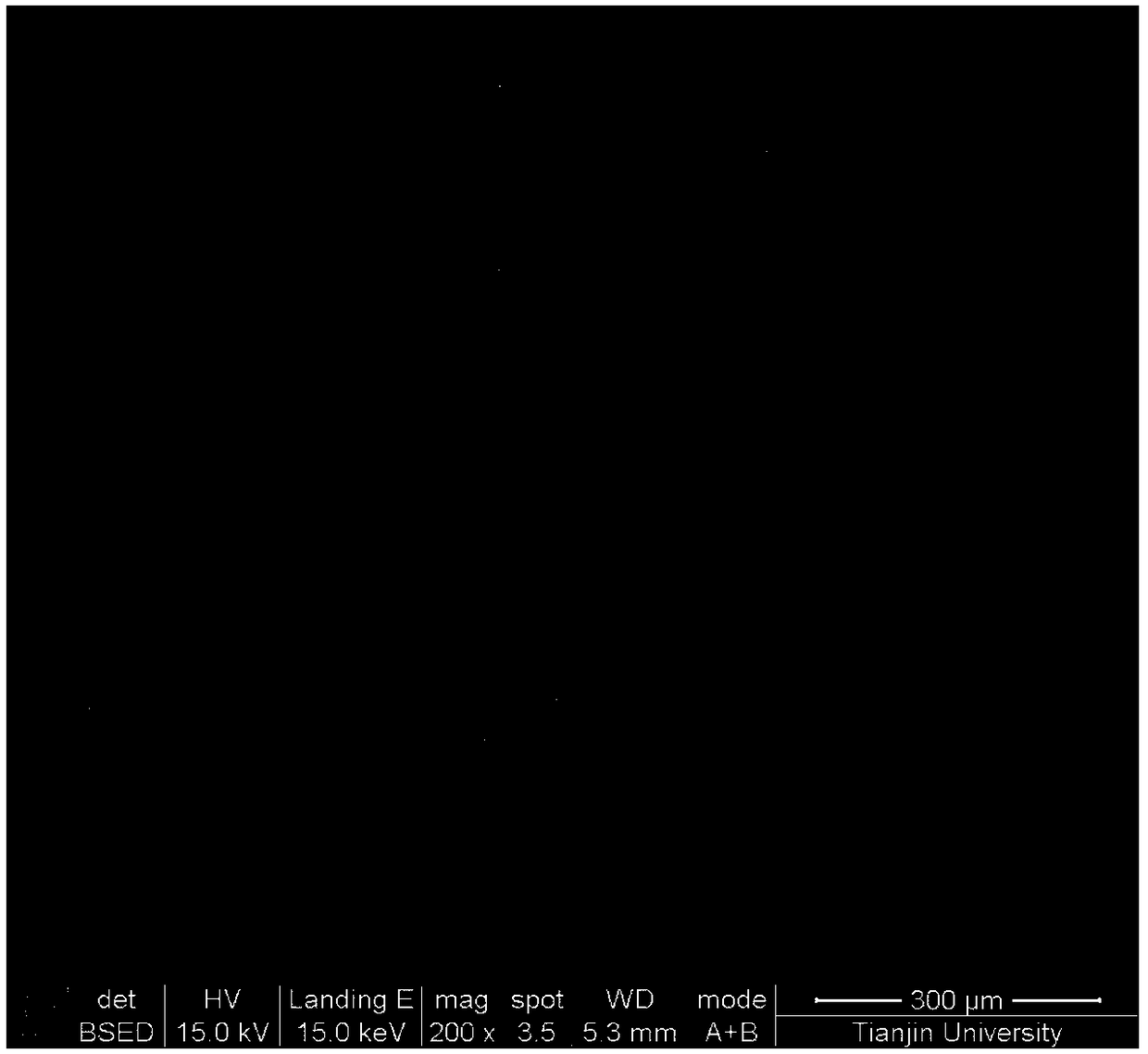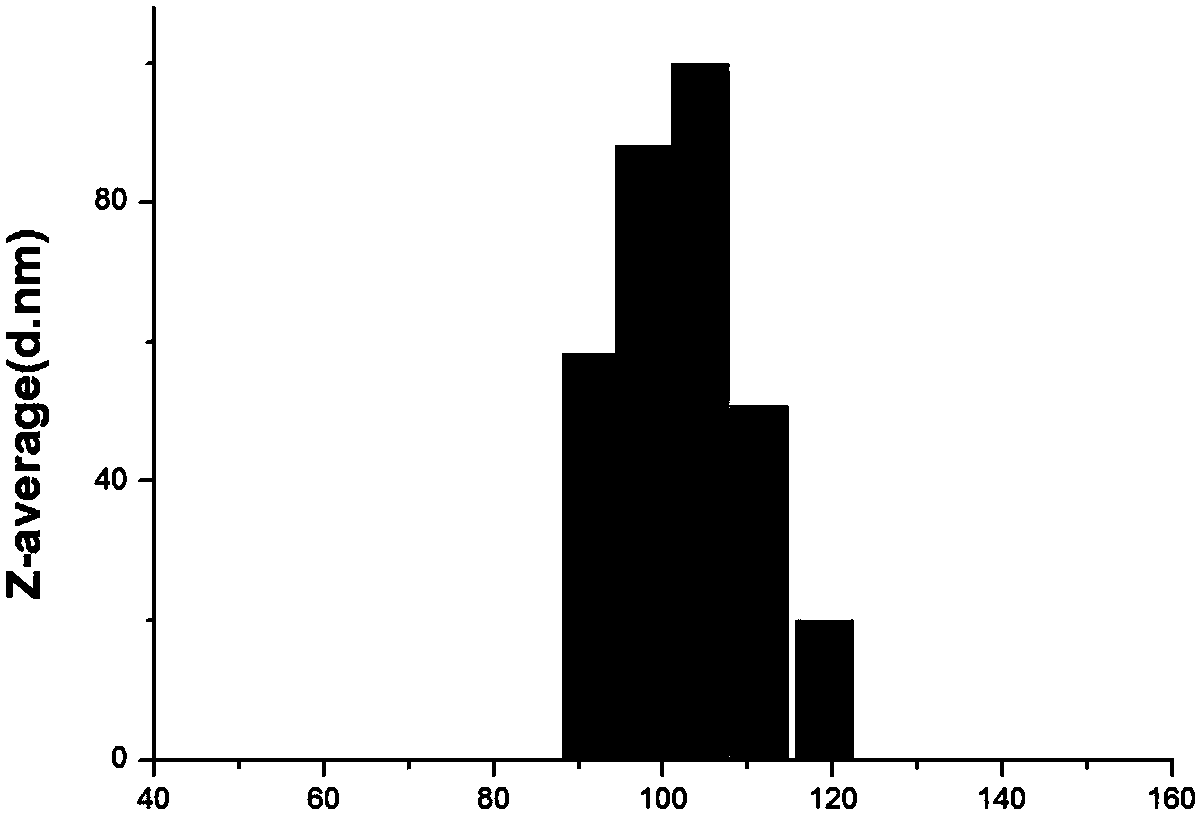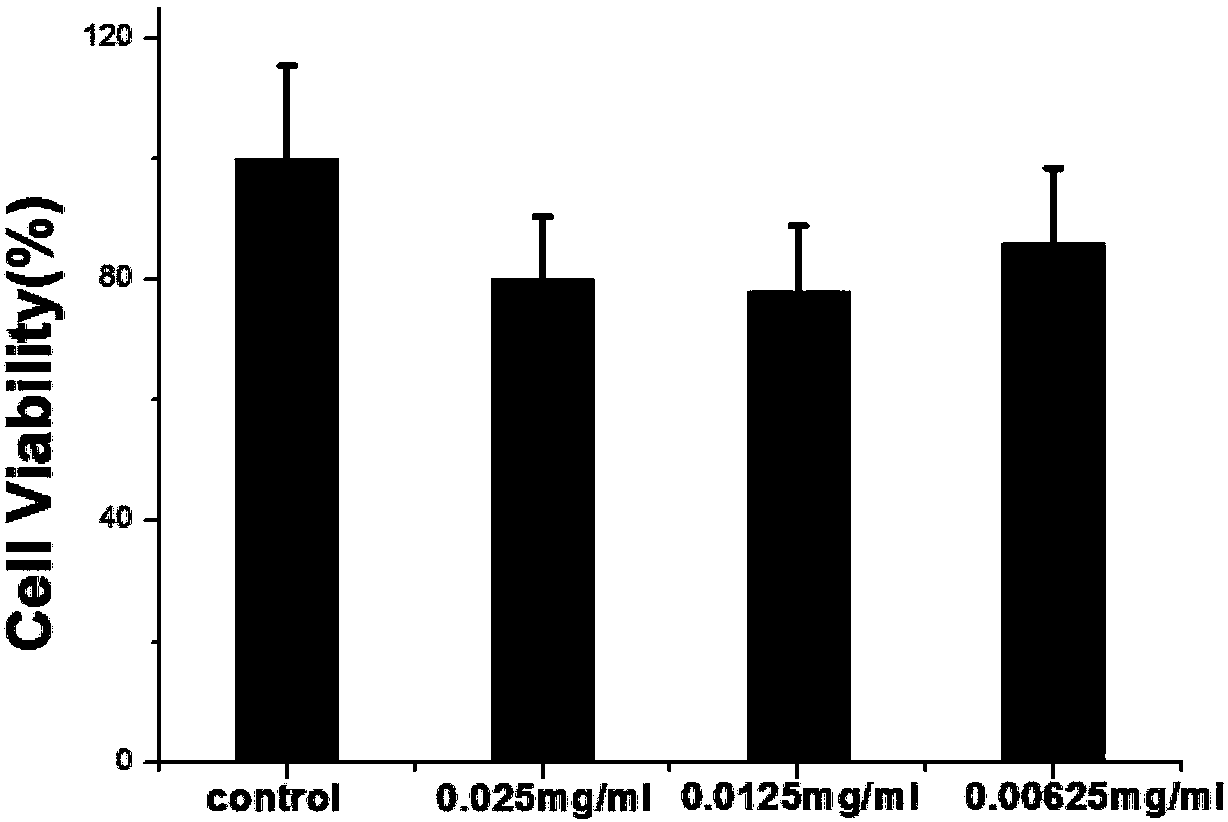Method for preparing mesoporous silica nanoparticles loaded with calcein and wrapped by cationic liposome
A technology of mesoporous silica and cationic liposomes, applied in the fields of biotechnology and medicine, can solve the problems of drug leakage, reduce drug efficacy, and take a long time, and achieve high-efficiency live cell labeling, high live cell labeling efficiency, low cytotoxic effect
- Summary
- Abstract
- Description
- Claims
- Application Information
AI Technical Summary
Problems solved by technology
Method used
Image
Examples
Embodiment 1
[0035] (1) Preparation of mesoporous silica nanoparticles loaded with calcein: use deionized water to configure calcein into a solution with a concentration of 250 micromolar, add mesoporous silica nanoparticles with a mass ratio of 1:5, and mix well , magnetically stirred at 400 rpm in the dark for 12 hours, centrifuged at 15,000 rpm for 15 minutes, carefully discarded the supernatant, and resuspended the precipitate in double distilled water to 5 mg / ml to obtain calcein-loaded mesoporous silica nanoparticles. particles.
[0036] (2) Preparation of cationic liposomes with uniform particle size: Weigh (2,3-dioleoyl-propyl)-trimethylamine and add chloroform to prepare a solution with a concentration of 2 mg / ml. Set the temperature of the water bath of the rotary evaporator to 36° C., turn on the vacuum pump to vacuum for 30 minutes, and a layer of milky white covering is formed at the bottom of the round bottom flask, which is a monolayer cationic liposome. Add 50% mass fracti...
Embodiment 2
[0040](1) Preparation of mesoporous silica nanoparticles loaded with calcein: use deionized water to configure calcein into a solution with a concentration of 260 micromolar, add mesoporous silica nanoparticles with a mass ratio of 1:8, and mix well , protected from light at 350 rpm magnetic stirring for 10 hours, centrifuged at 12,000 rpm for 13 minutes, carefully discarded the supernatant, and resuspended the precipitate with double distilled water to 3 mg / ml to obtain calcein-loaded mesoporous silica nanoparticles. particles.
[0041] (2) Preparation of cationic liposomes with uniform particle size: Weigh (2,3-dioleoyl-propyl)-trimethylamine and add chloroform to prepare a solution with a concentration of 8 mg / ml. Set the temperature of the water bath of the rotary evaporator to 40°C, turn on the vacuum pump to vacuum for 35 minutes, and a layer of milky white covering is formed at the bottom of the round bottom flask, which is a monolayer cationic liposome. Add 50% mass f...
Embodiment 3
[0045] (1) Preparation of mesoporous silica nanoparticles loaded with calcein: use deionized water to configure calcein into a solution with a concentration of 300 micromolar, add mesoporous silica nanoparticles with a mass ratio of 1:10, and mix well , magnetically stirred at 300 rpm in the dark for 6 hours, centrifuged at 10,000 rpm for 10 minutes, carefully discarded the supernatant, and resuspended the precipitate in double-distilled water to 1 mg / ml to obtain calcein-loaded mesoporous silica nanoparticles. particles.
[0046] (2) Preparation of cationic liposomes with uniform particle size: Weigh (2,3-dioleoyl-propyl)-trimethylamine and add chloroform to prepare a solution with a concentration of 10 mg / ml. Set the temperature of the water bath of the rotary evaporator to 42° C., turn on the vacuum pump to vacuum for 40 minutes, and a layer of milky white covering is formed at the bottom of the round bottom flask, which is a monolayer cationic liposome. Add 50% mass fract...
PUM
| Property | Measurement | Unit |
|---|---|---|
| Particle size | aaaaa | aaaaa |
| Diameter | aaaaa | aaaaa |
Abstract
Description
Claims
Application Information
 Login to View More
Login to View More - R&D
- Intellectual Property
- Life Sciences
- Materials
- Tech Scout
- Unparalleled Data Quality
- Higher Quality Content
- 60% Fewer Hallucinations
Browse by: Latest US Patents, China's latest patents, Technical Efficacy Thesaurus, Application Domain, Technology Topic, Popular Technical Reports.
© 2025 PatSnap. All rights reserved.Legal|Privacy policy|Modern Slavery Act Transparency Statement|Sitemap|About US| Contact US: help@patsnap.com



